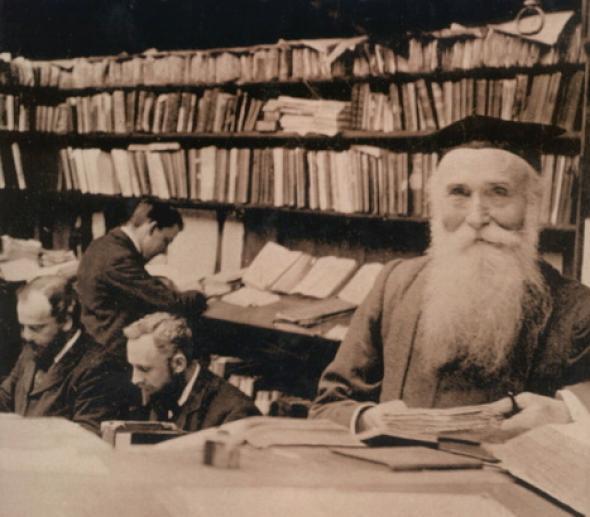The news came as something of a shock to the dictionary world: As announced in the Hollywood Reporter, Mel Gibson is set to star as James Augustus Henry Murray, the first principal editor of the Oxford English Dictionary, in an adaptation of Simon Winchester’s entertaining book, The Professor and the Madman, based on a true (but unbelievable) story.
Sean Penn is expected to play the titular madman, William Chester Minor, an American army surgeon who supplied Murray with countless citations for the OED from his cell in the Broadmoor insane asylum, where he was incarcerated after killing a man on the streets of London in 1872.
Penn as Minor is a reasonable bit of casting. But can Gibson pull off a portrayal of Murray, one of the patron saints of lexicography? Given his off-screen history of hateful comments, run-ins with the law, and alcohol abuse, he might strike moviegoers as more of a madman than a professor.
It turns out Gibson cast himself in the role, as he was the one to option Winchester’s book after it was first published in 1998. Even then, he saw himself in the role of James Murray. Dustin Hoffman was originally supposed to play Minor, and Luc Besson and John Boorman (who wrote a draft of the screenplay) considered directing the film.
Now that Gibson is reviving plans for the movie a decade and a half later, with backing from Voltage Pictures, he has tapped Farhad Safinia to direct. Safinia co-wrote Gibson’s 2006 film Apocalypto, which, you might recall, was shot in Mexico entirely in the indigenous language of Yucatec Maya. And before that he attempted to use reconstructed Aramaic in The Passion of the Christ. So this is hardly Mel’s first language-related pet project.
Gibson, an Americanized Australian, is difficult to picture as Murray, a mild-mannered Scottish philologist. In old photos, Murray grins wryly, framed by his academic cap and long white beard, typically surrounded by rows and rows of OED quotation slips in his Scriptorium.
Of course, when Gibson got the rights to The Professor and the Madman back in 1998, he was coming off a portrayal of another Scotsman, William Wallace in Braveheart. But Murray is no Wallace. You can’t imagine him bellowing, Braveheart style, “I am James Murray, and I see a whole army of my countrymen here in the service of lexicography. They make take our lives, but they’ll never take our headwords!”
Regardless of how Gibson fares in tackling Murray, this will undoubtedly be the highest-profile depiction of a lexicographer in cinematic history. Granted, there haven’t been many. Linguists in general get the occasional film role, like the phonetician Henry Higgins portrayed by Leslie Howard in Pygmalion and Rex Harrison in My Fair Lady. More recently there was Julianne Moore in her Oscar-winning turn in Still Alice, playing Dr. Alice Howland of the Columbia linguistics department. (Let’s ignore the fact that Columbia doesn’t have a linguistics department.)
But dictionary-makers get even less attention on the silver screen. Thus far, the only major Hollywood role that I know of is Gary Cooper as Professor Potts in the rollicking 1941 Howard Hawks comedy, Ball of Fire. Potts is working on the slang entry for an encyclopedia and decides he needs to do some fieldwork to learn the latest expressions. He goes to a nightclub, where he gets mixed up with a slang-slinging showgirl named Sugarpuss O’Shea, played by Barbara Stanwyck. Hijinks, needless to say, ensue.
(And speaking of lexicographers gamely deciphering slang, none other than Noah Webster makes an appearance in the 1951 MGM cartoon Symphony in Slang, directed by Tex Avery. In heaven, Webster is called upon by a gatekeeper to interpret the life story of a man who talks in colorful contemporary idioms. Poor Noah is left dumbfounded.)
The Murray-Minor story is ripe for a cinematic retelling, however. As I observed in a New York Times op-ed piece in 2012, what gets peddled as “scandalous” or “controversial” in the dictionary world often turns out to be rather humdrum. But Minor’s involvement in the creation of the OED after being locked away for murder is a truly riveting tale, as Gibson no doubt realized as soon as he read Winchester’s narrative. Let’s hope that he can do justice to Murray, a beloved figure in the history of lexicography, when he dons the signature black cap and white beard.
